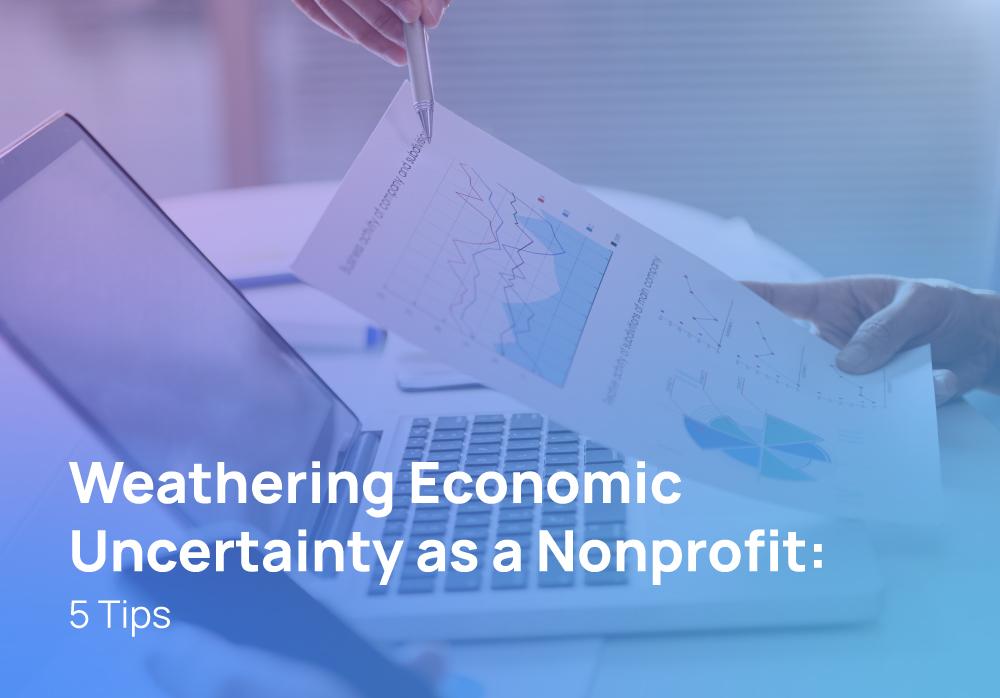When the economy wavers, nonprofits often find themselves on the front lines, although they’re facing both increased community needs and tighter budgets. Recent government funding cuts and economic volatility have left many nonprofits reeling, forcing them to reassess their financial situations and plans for the future.
To help you improve your organization’s resilience in the face of these challenges, we’ll cover five practical strategies for reinforcing financial stability and preparing for whatever comes next.
1. Make your reserve funds work harder for you
Your reserves are not only emergency funds, but they’re also a powerful tool for long-term sustainability. Instead of letting those funds sit idle in a traditional bank account, take strategic action to manage and grow your reserves responsibly.
Once you have at least 6-12 months’ worth of operating expenses in your reserve fund, the next step is optimizing your nonprofit’s cash management. Make sure you have concrete plans to:
-
Monitor your cash flow. Keeping detailed reports on your organization’s cash flow is a vital part of any financial strategy. Understanding your revenue, income, expenses, and assets will allow you to create realistic goals and plan for the future.
-
Manage risk. Take precautions with any new financial endeavors. For example, you should establish an investment policy statement (IPS) aligned with your board’s risk tolerance and implement cybersecurity measures.
-
Store reserves in a brokerage account. Traditional bank accounts often offer low rates and liquidity. Plus, they only insure funds up to $500,000. Instead, choose a brokerage account with a sweep program offering FDIC coverage up to $5 million that also enables you to invest.
Strategically managing your reserves gives your organization more stability when challenges arise. Work with a nonprofit investing advisor who can provide guidance, resources, and oversight to give yourself the best chance of success.
2. Diversify your fundraising channels
In uncertain times, it pays to get creative with your fundraising strategy. Expand your reach by exploring these lucrative giving methods and opportunities:
-
Request donor-advised fund (DAF) grants. Donor-advised funds benefit donors in several ways, but they can only help your nonprofit if you ask for grants and donors follow through. Identify potential DAF holders and make the request process easy to secure more funding.
-
Leverage fundraising event technology. Events like auctions, walk-a-thons, and celebration fundraisers are great opportunities to engage your supporters while raising money. Expand your reach using digital tools like peer-to-peer fundraising platforms and online auction software to allow supporters who can’t attend to participate.
-
Accept non-cash gifts. Encouraging your supporters to make gifts of stock or cryptocurrency maximizes your fundraising potential. In fact, nonprofits that accept both asset and cash donations can increase contributions by 55%. Accepting these gifts also encourages larger donations, while the average cash gift is about $128, the average crypto gift is almost $10,000. At Infinite Giving, the average stock gift value is more than $30,000.
Diversifying your revenue streams increases your fundraising opportunities and makes you less reliant on a single source of funding. If a grant falls through or individual giving suddenly drops, other revenue sources can fill the gaps. Plus, embracing the latest giving methods will bring your fundraising strategy into the modern era and show donors that you’re not afraid of change.
Curious how enhanced event tools could boost your fundraising?
3. Communicate transparently with stakeholders
Being candid with your supporters when you’re facing funding challenges is crucial. It may be tempting to ignore or sugarcoat the issue if you’re afraid of losing stakeholders’ confidence, but honesty builds trust.
Here are a few ways to ensure your communications are clear and compelling in the face of uncertainty:
-
Write a sensitive fundraising appeal. Everyone struggles during times of economic uncertainty. Be transparent with your supporters about how much funding you need to continue your mission’s vital work, but be wary of asking for too much since your supporters may also be tightening their belts. To show your supporters why it’s more important than ever to donate, remember to use your storytelling skills to illustrate why your cause matters.
-
Use multiple channels. Communicating via various platforms is a great way to engage with your supporters. Try creating shareable social media content and encouraging your supporters to repost it to their own accounts to expand your audience while communicating a sense of urgency.
-
Meet with major donors. Your major donors are the supporters best equipped to help you through an economic crisis. Cultivate a strong relationship with these donors so a request for a face-to-face meeting doesn’t come out of the blue. During these meetings, remind them of the important work their contribution supports and explain the reality of your situation.
Honesty and humility foster genuine connection with your supporters, increasing the likelihood that they’ll want to continue your relationship when you face adversity.
4. Use AI to prepare for the future and save time
Artificial intelligence (AI) has many potential uses for nonprofits. When economic uncertainty strikes, every second and every dollar counts. Take advantage of AI to boost your team’s efficiency by:
-
Using predictive modeling to identify likely major or recurring donors. DonorSearch’s guide to generative and predictive AI writes that “by segmenting prospects and prioritizing outreach based on predictive AI suggestions, you can make sure your team’s time and resources are going toward acquiring the right donors to meet your nonprofit’s needs,” which will be especially valuable in trying times.
-
Automating thank-you notes or follow-ups so your team can maintain consistent donor engagement without adding to your workload. Just remember to edit any messages generated by AI to ensure they reflect your organization’s brand voice and humanity.
-
Analyzing campaign performance in real time to adjust strategies quickly and avoid wasted effort or budget.
AI and other emerging technologies can help your team stay agile and informed so you’re prepared to navigate any crisis.
5. Ask a professional for help
Sometimes, the smartest thing you can do is ask for help, especially when the road ahead feels uncertain. A nonprofit investment advisor can take a big-picture look at your financial health and help you implement the tips listed here, like improving cash management strategies and diversifying revenue streams.
Infinite Giving suggests you look for an advisor who has a fiduciary responsibility to work in your best interest, experience relevant to your organization’s goals, conservative investment portfolios, and a willingness to create an IPS at no additional cost.
Along with these qualities and services, make sure your advisor is someone you can work with long-term. An experienced advisor should do more than help manage your money, as they should also come alongside you as a strategic partner in making your nonprofit stronger, steadier, and more future-ready.
Nonprofits are all too familiar with tight budgets and shifting priorities, but economic uncertainty can take those challenges to a new extreme. Strategically planning for the future and learning to pivot when circumstances change is critical for nonprofits that want to not only survive the storm, but thrive in spite of it.




